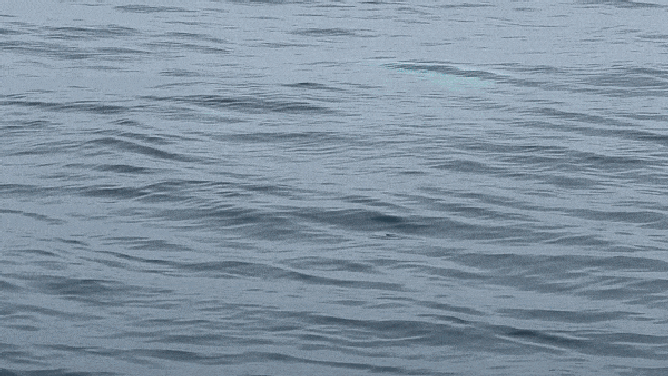Watch: Rare white killer whale named Frosty sighted off California coast
Spotting a pod of orcas off the California coast is rare enough. These whale watchers were able to see one of only five or six milky white killer whales in the world, too.
Rare sighting: Frosty the killer whale off California
Frosty the killer whale made a rare appearance in Newport Beach, California recently. The whale-watching boat says they have not seen it since 2023. Frosty has a genetic disorder that makes it appear lighter than other orcas.
NEWPORT BEACH, Calif. – The white whale is illusive no more. Frosty the killer whale made a rare appearance off the coast of California.
A whale-watching boat took video of the first sighting of the unusual whale last week. The educator for the company said that seeing orca whales off of California is rare enough. But, watchers were treated to a very rare milky-white killer whale too.
"Sightings of killer whales are few and far between along the Southern California coastline, so it was a very special encounter," Jessica Roam of Newport Landing Whale Watching said in a statement.
WHY ARE KILLER WHALES ATTACKING SHIPS?

Frosty has a condition that makes its skin white colored in areas.
(Delaney Trowbridge, @NewportCoastalAdventure, @NewportWhales / FOX Weather)
Frosty, aka CA216C1 to the California Killer Whale Project, is one of only five or six known killer whales in the world with Leucism, according to the Oceanic Society. Leucism is a condition that causes the partial loss of pigmentation, leading to pale, white or patchy coloration.
"Leucistic Frosty likely has Chediak-Higashi syndrome (rare autosomal recessive immunodeficiency disorder often including respiratory infections and reduced pigmentation)," the California Killer Whale Project posted on social media. "Frosty looked more robust than in past encounters: so wonderful to see Frosty thriving!"
The leucitic whale is a Biggs or transient killer whale. They live in small pods in coastal waters where they hunt prey like sea lions, porpoises and dolphins.
SPECTACULAR UNDERWATER FOOTAGE CAPTURES ORCA ‘ORCHESTRA’ IN ICY ANTARCTICA WATERS

Frosty and part of the pod.
(Delaney Trowbridge, @NewportCoastalAdventure, @NewportWhales / FOX Weather)
"We got extremely lucky, and were able to relocate a pod of at least 5-7 orcas, one of which was a 4-year-old calf named ‘Frosty’ after it’s milky white appearance," Capt. Dani Fasser told Roam. "We were watching a pair of giant fin whales, and all of a sudden, we saw puffs in the distance, which were definitely not dolphin. Turns out it was killer whales."
Frosty and family were feeding on a beach ball-sized chunk of gray whale blubber, according to the project. Fasser said the whales passed it back and forth and dove under the boat.

Frosty and pod diving underneath a whale watch boat in April 2023.
(@NewportCoastalAdventure, @NewportWhales) / FOX Weather)
"They were circling and feeding nearly constantly throughout the 4.5 hours of observations, on a gray whale that they had likely killed the previous day; multiple whales have pieces of gray whale blubber/skin in their mouths," the project posted.
Orcas can be spotted off the coast from January to May and September to November, according to the Pacific Grove Museum of Natural History. Most sightings are in April, May and June, while the mammals feed on northbound migrating gray whales.
